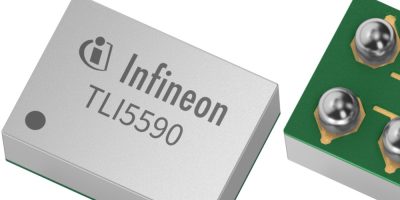Renesas has introduced the DA14592 Bluetooth Low Energy (LE) System-on-Chip (SoC) representing Renesas’ lowest power consumption and smallest, multi-core (Cortex-M33, Cortex-M0+), Bluetooth LE device. By carefully balancing tradeoffs between on-chip memory (RAM/ROM/Flash) and SoC die size (for cost), the DA14592 is very well suited to a broad range of applications including connected medical, asset tracking, human interface devices, metering, PoS readers and ‘crowd-sourced location’ (CSL) tracking.
The DA14592 utilises a new low-power mode to offer 2.3mA radio transmit current at 0dBm and 1.2mA radio receive current. Additionally, it supports an ultra-low hibernation current of only 90nA, extending shelf-life for end-products shipped with ‘battery connected’, and ultra-low active current at 34µA/MHz for products requiring significant application processing.
Operating from only a system clock and its accurate on-chip RCX, this device removes the need for a sleep mode crystal in the majority of applications. Its reduced eBOM, coupled with the DA14592’s small package (offered in WLCSP: 3.32mm x 2.48mm and FCQFN: 5.1mm x 4.3mm) also presents designers with an small solution footprint. The DA14592 also includes a high-precision, sigma-delta ADC, up to 32 GPIOs and unlike other SoCs in its class, it offers a QSPI supporting external memory (Flash or RAM) expansion for applications requiring extra memory.
Renesas has integrated all external components required to implement a Bluetooth LE solution into the DA14592MOD module. It offers customers the fastest time-to-market and reduced overall project cost. Emphasis has been placed in the design of this module to ensure maximum design flexibility by comprehensively routing the DA14592’s functions to the outside of the module and using castellated pins for easy/low-cost module attachment during development.
“The DA14592 and DA14592MOD extend our leadership in Bluetooth LE SoCs with our trademark low power consumption and best-in-class eBOMs,” said Davin Lee, Sr. Vice President and General Manager of the Analog and Connectivity Product Group for Renesas. “In addition, we have listened to our customers and continue to expand our product support by offering reference designs for applications such as crowd-sourced locationing, helping our customers to more easily differentiate their products, delivering premium value while maintaining lowest costs.”







